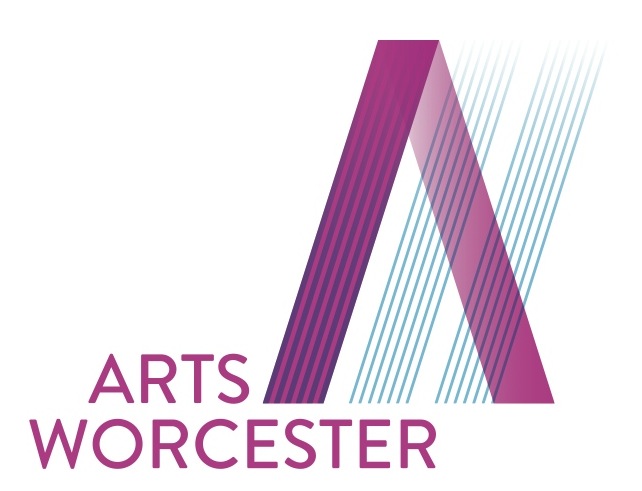/Madge Evers
@_sporeplay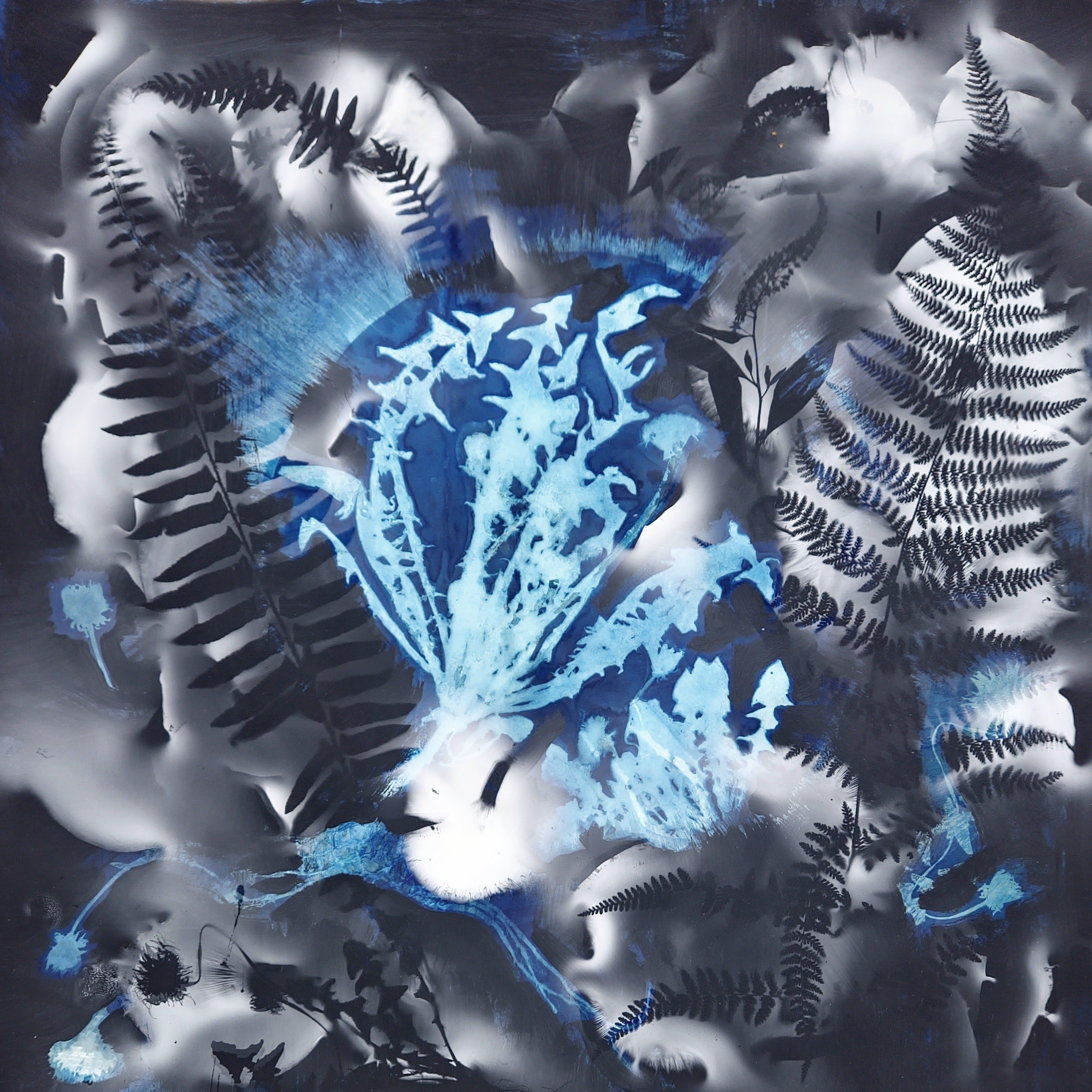
Madge Evers
Burns Blue
mushroom spores, cyanotype, gesso on paper
24″ x 24″
2024
The foundation of this work on paper is a botanical photogram, rendered in cyanotype, the alternative photographic process used by botanist Anna Atkins in 1843 to make the first, ever, photographic book. Over the cyanotype, I add gesso and, in a collaboration with fungi, the bioluminescent spores of the Jack O’Lantern mushroom (Omphalotus illudens). The image depicts native New England ferns (Paratherlypteris simulata) and the opportunistic Dandelion (Taraxacum officinale) and Gooseneck Loosestrife (Lysimachia clethroides), plants that alter flora and ecosystems not with malice, but to seek the light.
@_sporeplay
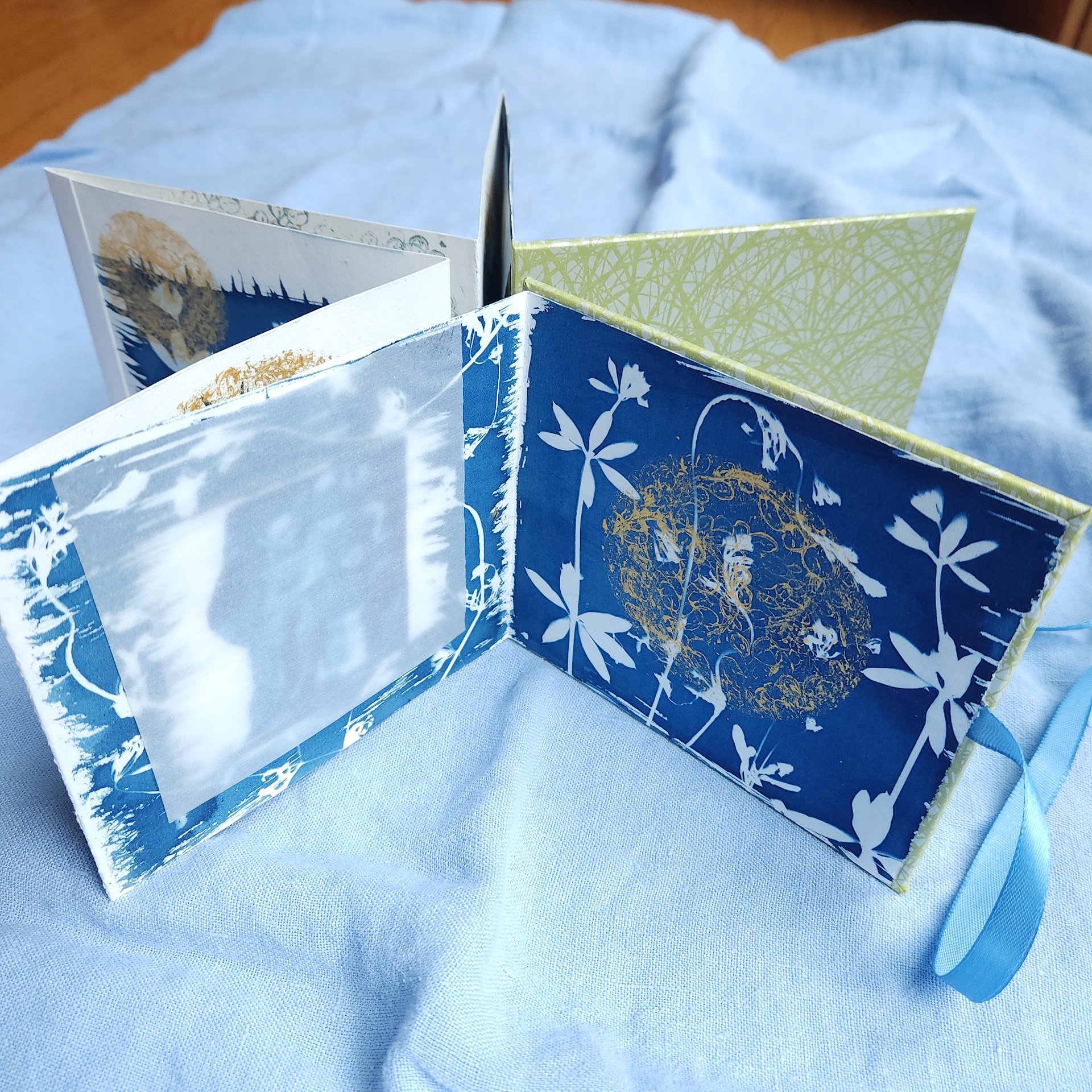
Madge Evers
Cleave
vintage negatives, cyanotype, acrylic, watercolor paper, tracing paper, book cloth, ribbon; accordion fold with hard cover front and back
6″ x 6″ closed, 6″ x 44″ open
2023
$400
This book uses vintage negatives of my grandfather and mother with pressed cleavers and hydrangeas to depict longings. Cleave is a contranym. Cleave can mean both “stick together” and “split apart” and is an apt word to describe the inherent tensions of life in a family, culture, or civilization. A person may be attached to one’s family or culture, but also, at times, and in certain instances, a person (or persons) may wish to separate, to split, or to divide from family or society. This desire for attachment and longing for separateness is one with which I am familiar.
https://www.instagram.com/_sporeplay/
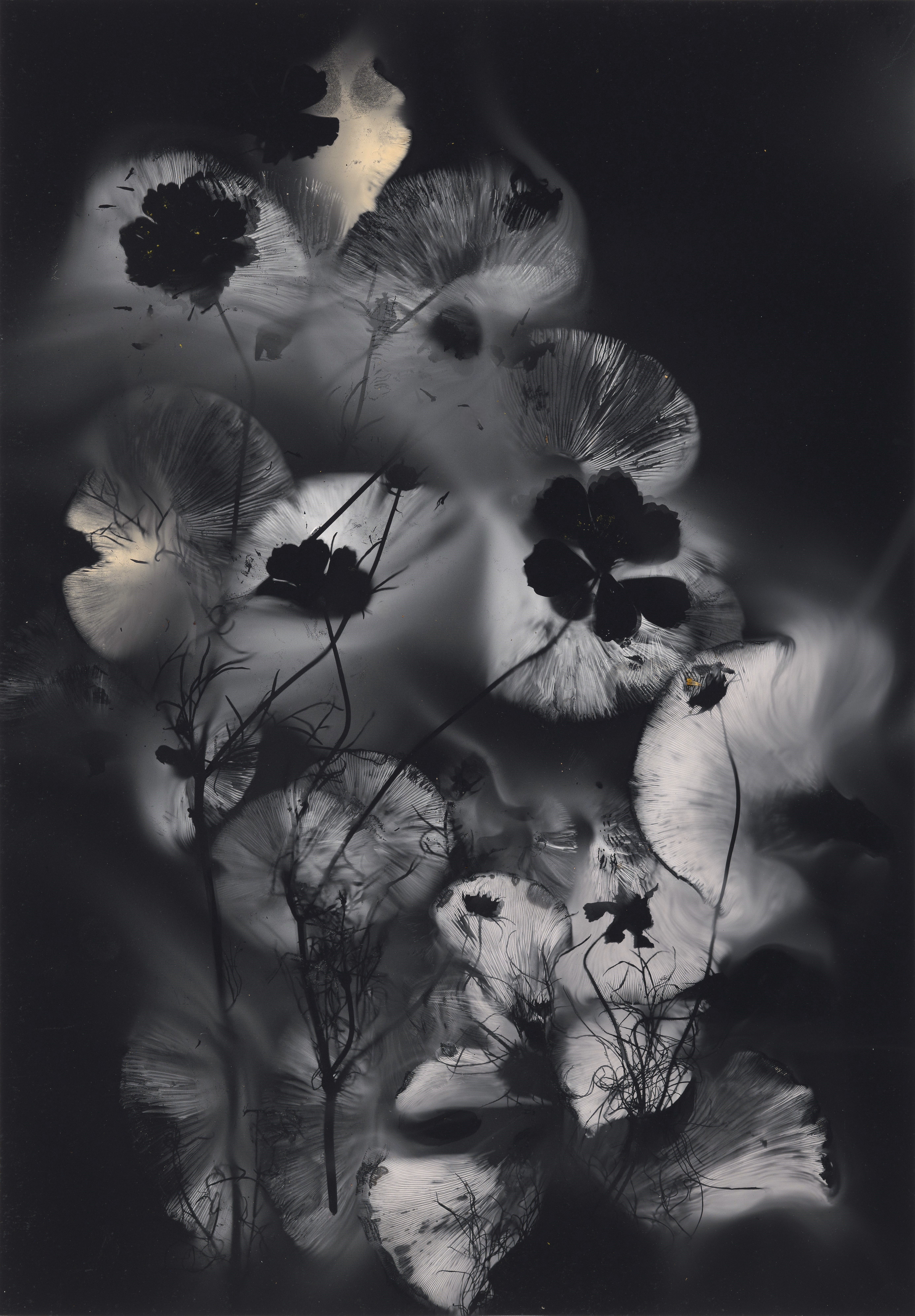
Madge Evers
Cosmos
Inspired by: Joyce Tenneson, Fork Shaped Tree
mushroom spores on paper
14″ x 20″ (unframed)”, 22″ x 28″ (framed)
2023
This image depicts flowers from my garden, a place of reverence for me, with its ecstatic growth and transformative dormancy and decay. I rendered the Cosmos in mushroom spores, a substance that originates in the gills of mushrooms and, like gold, evokes cosmic stardust.
@_sporeplay
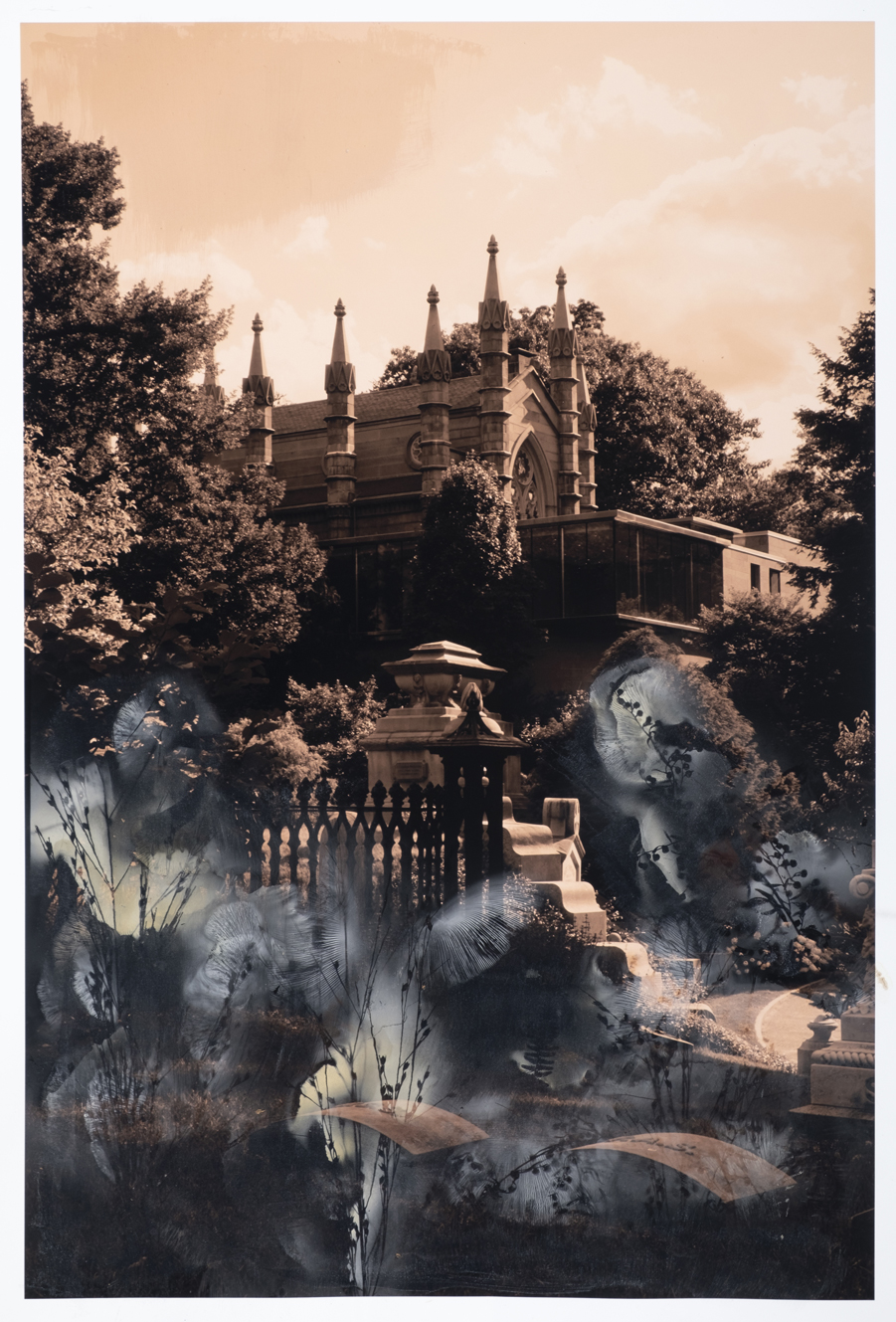
Thierry Borcy
Madge Evers
Before the Departure
photograph; mushrooms spores on photo; scan of new image; final printed photograph
26″ x 38″ (framed)
2022/2023
These collaborative works explore the quality of transformation inherent in death, grief, and rebirth. The images are created by combining two distinct art processes – photography and the mushroom spore print. Borcy and Evers depict the landscape of Mount Auburn Cemetery and its human created statuary together with the regenerative biodiversity of fungi and plants.
@borcy.art.photo
@_sporeplay
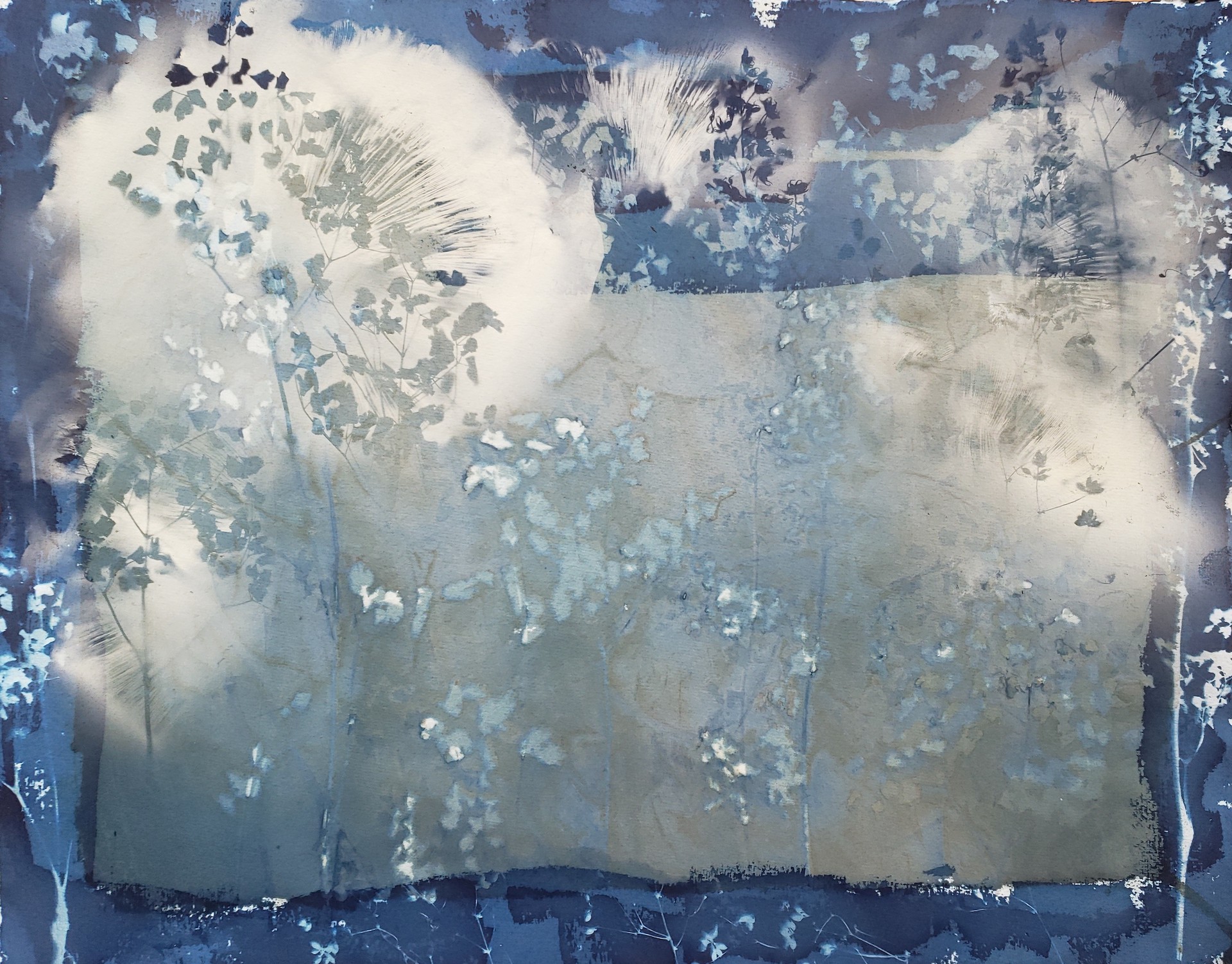
Madge Evers
Ghost Trees Dusk
Inspired by: Robert Adams, Bulldozed Slash Esther Solondz, Untitled (Rust Portrait)
cyanotype and mushroom spores on paper
16″ x 20″
2021
Like Robert Adams’ Bulldozed Slash, Ghost Tree Dusk originated in the American west where I gathered Meadow Rue/Thalictrum from Rocky Mountain meadows in July of 2021 as a smoky veil from millions of acres of burning trees in the Pacific Northwest shrouded the surrounding peaks. I understand Adams’ desire to find hope within a natural world ravaged by humans; I find hope in the symbiotic relationship between plants and fungi, called mycorrhizae. I use mushroom spores as a medium to make this relationship visible; spores help me depict the plants that I forage. Ghost Tree Dusk began as a cyanotype photogram, over which I made several mushroom spore prints that repeated the botanical form in the cyanotype. Like Esther Solondz’s use of rust in Untitled (Rust Portrait), I work collaboratively with material from nature to convey resilience, adaptation, and connection.
@_sporeplay
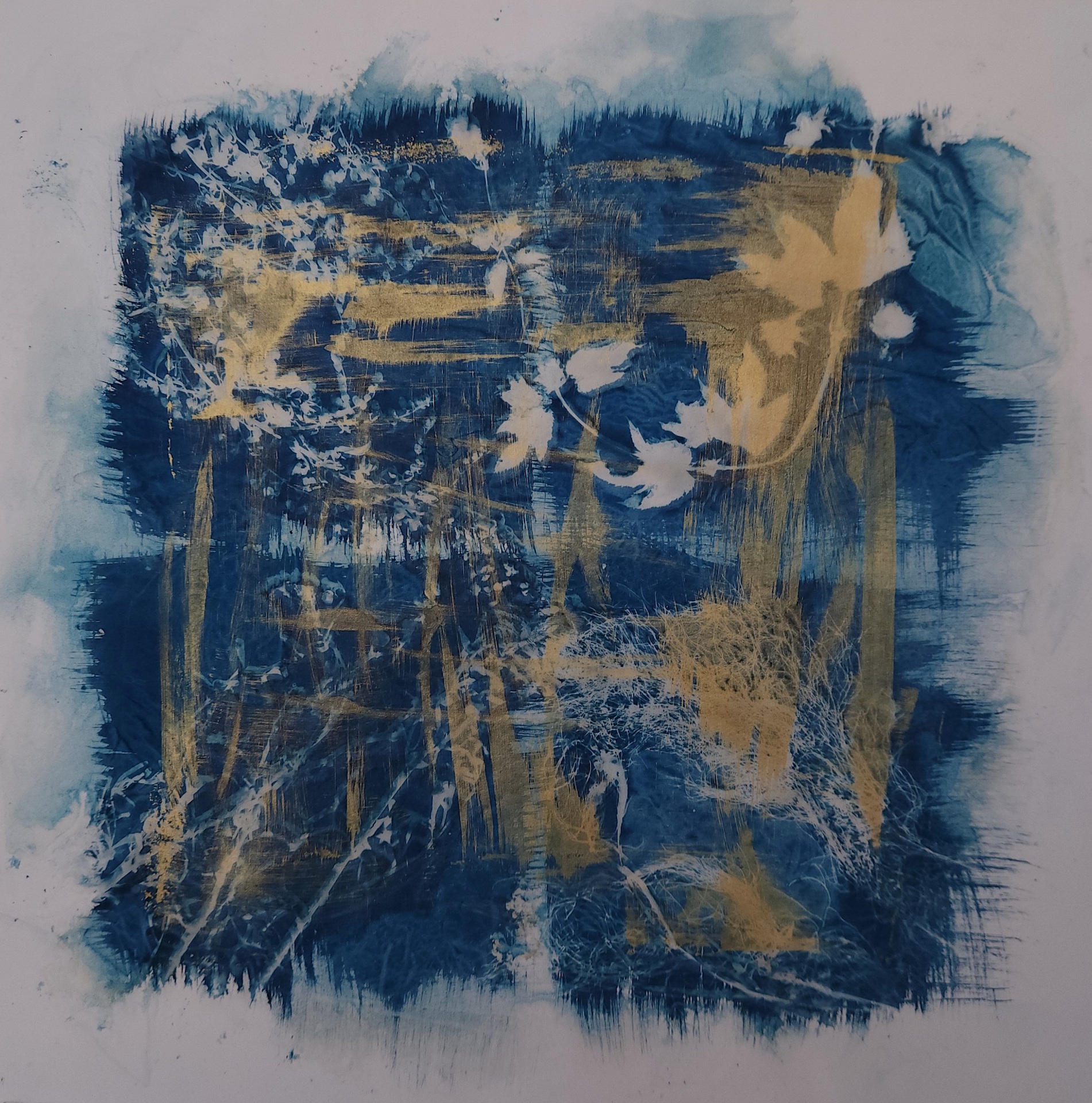
Madge Evers
Four: Fennel, hops, Rue, Wormwood
cyanotype and acrylic on paper
16″ x 16″
2022
Part of ‘Foraged: A Kitchen Garden Herbaria,’ created during a 2022 artist residency at the Kinney Center for Renaissance Studies in which I investigated multispecies collaborations between humans, animals, plants, and fungi, in the early modern world and our own. All of the work, including Four: Fennel, Hops, Rue, Wormwood, explores our entangled dependence on an ever-changing environment as the desire to shape the natural world yields increasingly chaotic results.
@sporeplay
Madge Evers
Black and White Creeper
cyanotype on altered book page and cold wax on cradled board
8″ x 10″
2022
I am an avid composter (33% of our waste is compostable!); real plants grow from my efforts. Paper is compostable too, so from my shelves I gather images on pages of scarcely opened books that will eventually be discarded. I began with the salvaged work of John Audubon. It felt strange to alter the birds, covering the painter’s carefully rendered habitats in cyanotype chemistry. In this image, I used chervil grown in my garden with compost made from household waste. Once complete, I mounted the image on a cradled board and finished it with cold wax.
@_sporeplay
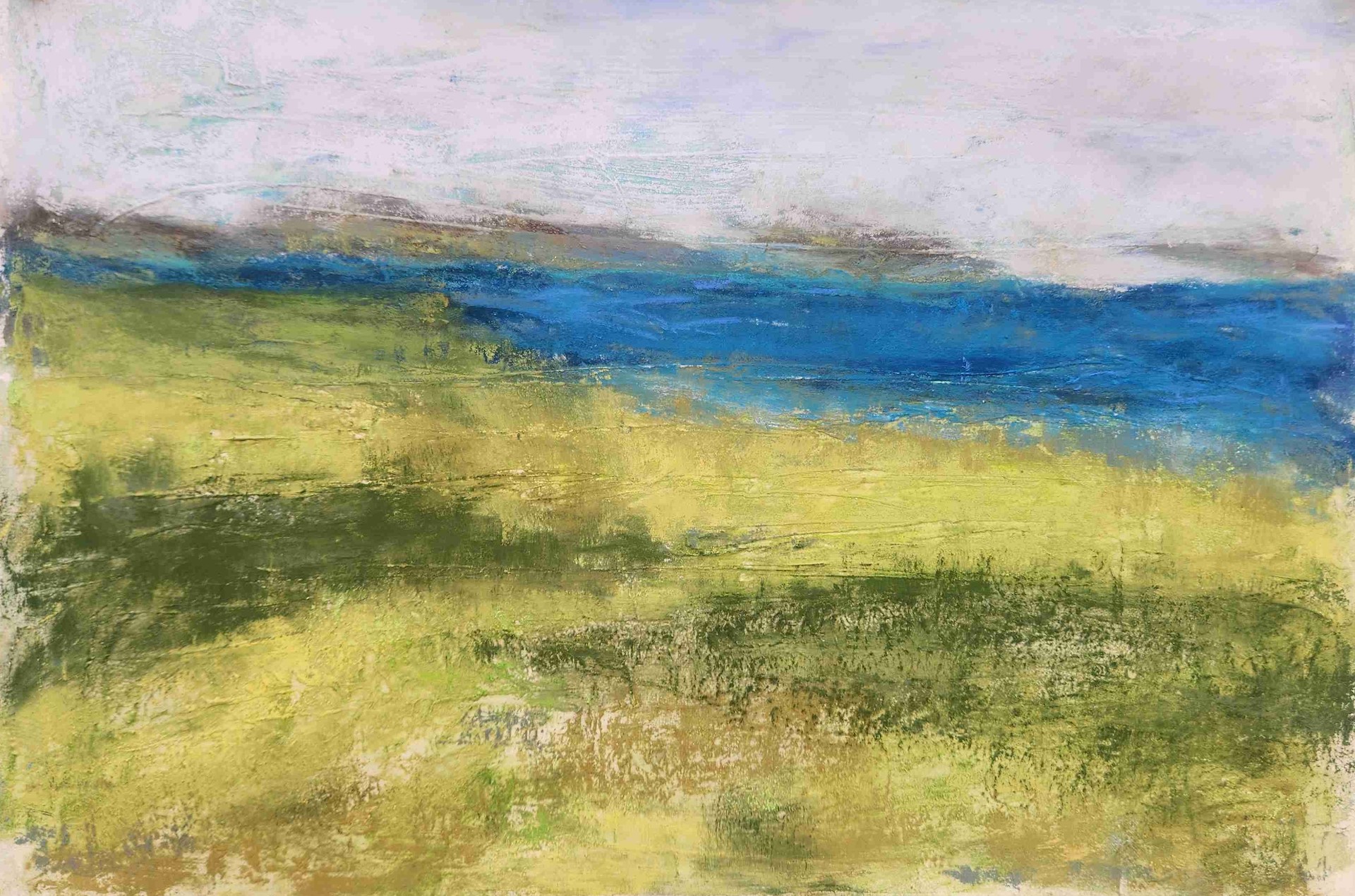
Madge Evers
Finian’s Bay From the Skellig Way
pastel and pumice on paper
11″ x 16″
2023
Depicts a September landscape as seen from the Skellig Way on the west coast of Ireland.
@_sporeplay
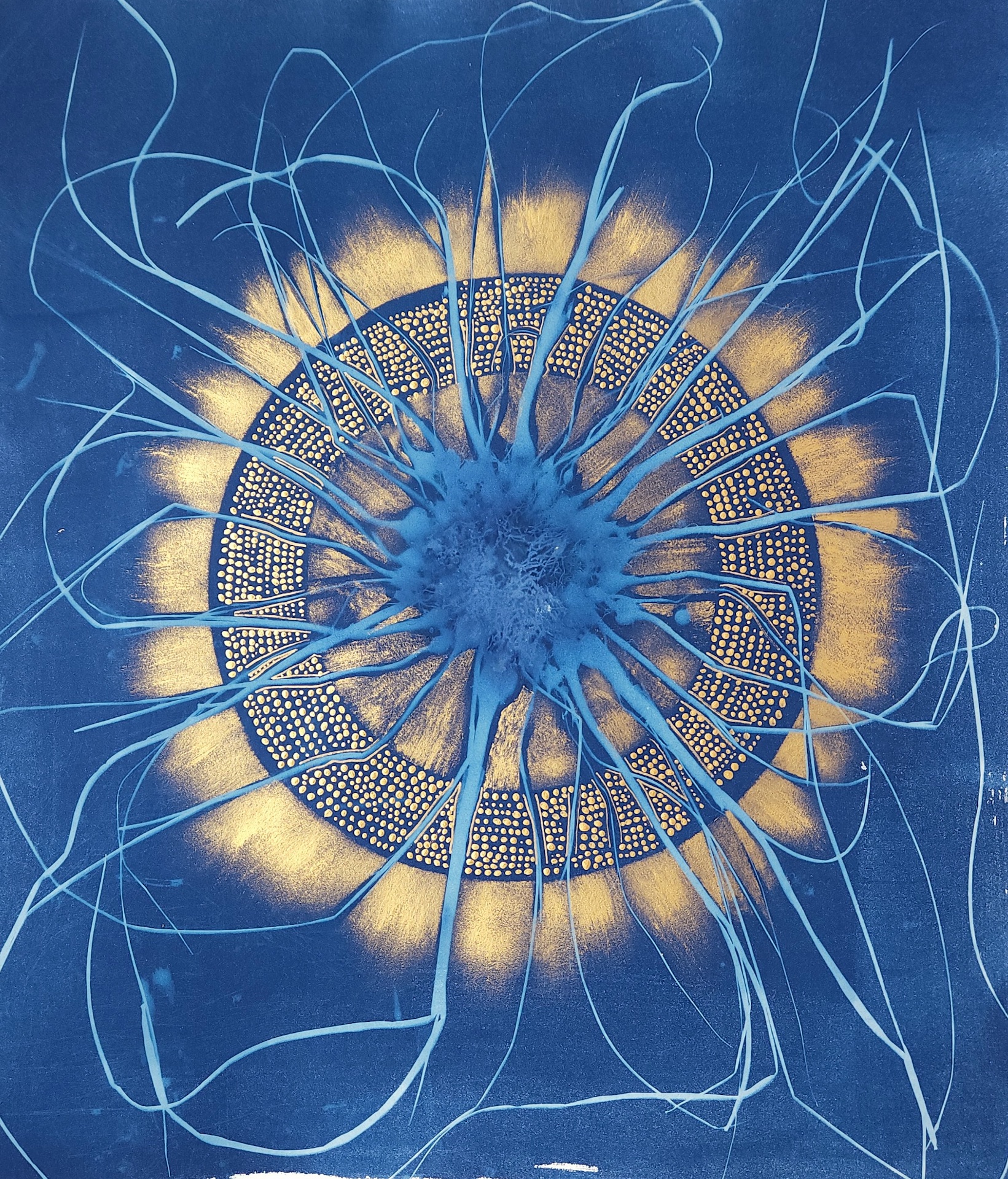
Madge Evers
Equinox, Oak Spring I
Inspired by: Mixteca-Puebla Artist, Tripod Bowl David Seltzer, Sea Salt/Lemon Sage
cyanotype and acrylic gesso
18.5″ x 21″
2024
All food begins in the soil. A wild and edible plant, onion grass appears in early spring; online advice about how to eradicate Allium vineale from one’s lawn abounds. Like the Mixteca-Puebla artist Tripod bowl, the work contains comforting patterns and forms that could be interpreted as snake-like. Both works suggest the many connections between all beings in the natural world. Like David Seltzer’s Sea Salt/ Lemon Sage archival print, Equinox, Oak Spring I uses a photographic process to present an abstracted version of familiar ingredients.
@_sporeplay
